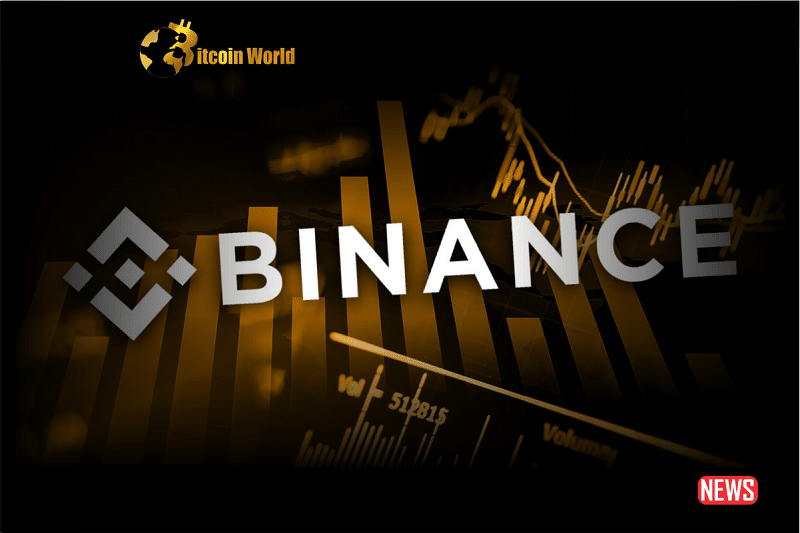The cryptocurrency world is rarely static, and lately, the spotlight has been firmly fixed on Binance, the globe’s leading crypto exchange, and its US counterpart, Binance.US. It’s been a year of significant headwinds, primarily driven by increased regulatory attention across various jurisdictions. This pressure has undeniably impacted their market standing. Let’s dive into the details of what’s been happening.
The SEC Steps In: How Did the Lawsuit Affect Binance’s Global Reach?
A major turning point came with the Securities and Exchange Commission (SEC) filing a lawsuit against Binance, alleging regulatory irregularities. This wasn’t just a minor bump in the road; data from the analytics firm Kaiko reveals a tangible impact. At the beginning of the year, Binance commanded an impressive 60% of the global market share. However, by last month, that figure had noticeably dipped to 52%. That’s a significant shift in a relatively short period.
Zero-Fee Gone? Did Binance’s Decision Play a Role?
According to Dessislava Aubert, an analyst at Kaiko, another factor potentially contributing to this market share decline was Binance’s decision in March to discontinue zero-fee transactions for certain trading pairs. This change, while perhaps necessary from a business perspective, appears to have opened the door for competitors. As Binance’s market share felt the squeeze, rival exchanges like Bybit and OKX were quick to capitalize on the evolving landscape.
Where Did Binance’s Market Share Go?
Aubert’s analysis indicates a dispersion of Binance’s market share across several exchanges. Bybit and OKX, in particular, have demonstrated strong performance during this period. It’s a clear example of market dynamics at play – when one player faces challenges, others often rise to meet the demand. Even Binance.US, operating as an independent partner, hasn’t been immune to the market’s volatility.
Binance.US Under Pressure: The Impact of the Asset Freeze
The SEC’s pursuit of a court-ordered asset freeze had a particularly dramatic effect on Binance.US. Consider this: In April, Binance.US held over 22% of the US market. Fast forward to June 26th, and that stake had plummeted to a mere 0.9%. This stark decline underscores the severity of the regulatory pressure and its immediate consequences on market position.
Coinbase’s Ascent: Who Benefited from the Shift?
While Binance and Binance.US faced headwinds, another major industry player, Coinbase, experienced a surge in activity. Their market share in the United States climbed from 48.4% to an impressive 55% in June. What fueled this growth?
- Strategic Partnerships: Aubert points to the fact that Fidelity and other prominent asset managers chose Coinbase as their surveillance partner for filing a spot Bitcoin ETF. This vote of confidence likely boosted investor trust and activity on the platform.
Are Binance’s Challenges Unique? A Look at the Broader Crypto Landscape
It’s important to remember that Binance isn’t operating in a vacuum. Numerous crypto businesses are currently pushing back against the SEC’s stance on classifying crypto tokens as securities. They are actively advocating for clearer regulatory frameworks. In fact, the entire cryptocurrency market experienced a slowdown in the second quarter, with spot trade volumes hitting their lowest point since 2020. This suggests a broader market trend beyond the specific challenges faced by Binance.
Bitcoin’s Resilience: A Bright Spot Amidst the Challenges
Despite the market-wide difficulties, there were glimmers of optimism. Towards the end of the quarter, Bitcoin experienced a significant surge, reaching a one-year high of over $31,000. This positive movement was partly fueled by encouraging signals from major asset managers, most notably BlackRock, which injected a dose of much-needed optimism into the market.
Global Regulatory Scrutiny: The Case of Australia
Returning our focus to Binance, the regulatory pressures extend beyond the US. The Australian Securities and Investments Commission (ASIC) recently conducted an investigation at Binance’s offices concerning its now-defunct local derivatives operations. This adds another layer to the regulatory hurdles Binance is currently navigating on a global scale.
BNB’s Response: How Has Binance’s Native Coin Fared?
Amidst the flurry of news surrounding Binance, its native coin, BNB, has exhibited volatility. While it has gained 3.4% over the past week, it also experienced a 0.9% dip in the last 24 hours. As of now, BNB is trading at $239.70, with a trading volume of $676.8 million. This highlights the sensitivity of cryptocurrency prices to news and regulatory developments.
Key Takeaways: What Does This Mean for the Future?
- Regulatory Scrutiny is a Major Factor: The SEC lawsuit and other regulatory actions have demonstrably impacted Binance’s market share.
- Competition is Fierce: Rival exchanges are actively seizing opportunities created by Binance’s challenges.
- Market Dynamics are Complex: Factors beyond regulatory issues, such as the discontinuation of zero-fee trading, can also influence market share.
- The US Market is Significantly Affected: Binance.US has experienced a dramatic decline in its market presence.
- Broader Market Trends Exist: The entire crypto market faced challenges in the second quarter, indicating systemic factors at play.
- Bitcoin’s Resilience Offers Hope: The surge in Bitcoin’s price suggests underlying strength and continued interest in the asset class.
Looking Ahead: Can Binance Weather the Storm?
Binance’s current situation underscores the growing pains of the cryptocurrency industry as it seeks greater regulatory clarity. While the challenges are significant, Binance remains a dominant player with considerable resources. How they navigate these regulatory hurdles and adapt to the evolving market landscape will be crucial in determining their future trajectory. The coming months will undoubtedly be pivotal for both Binance and the broader cryptocurrency ecosystem.
Disclaimer: The information provided is not trading advice, Bitcoinworld.co.in holds no liability for any investments made based on the information provided on this page. We strongly recommend independent research and/or consultation with a qualified professional before making any investment decisions.


